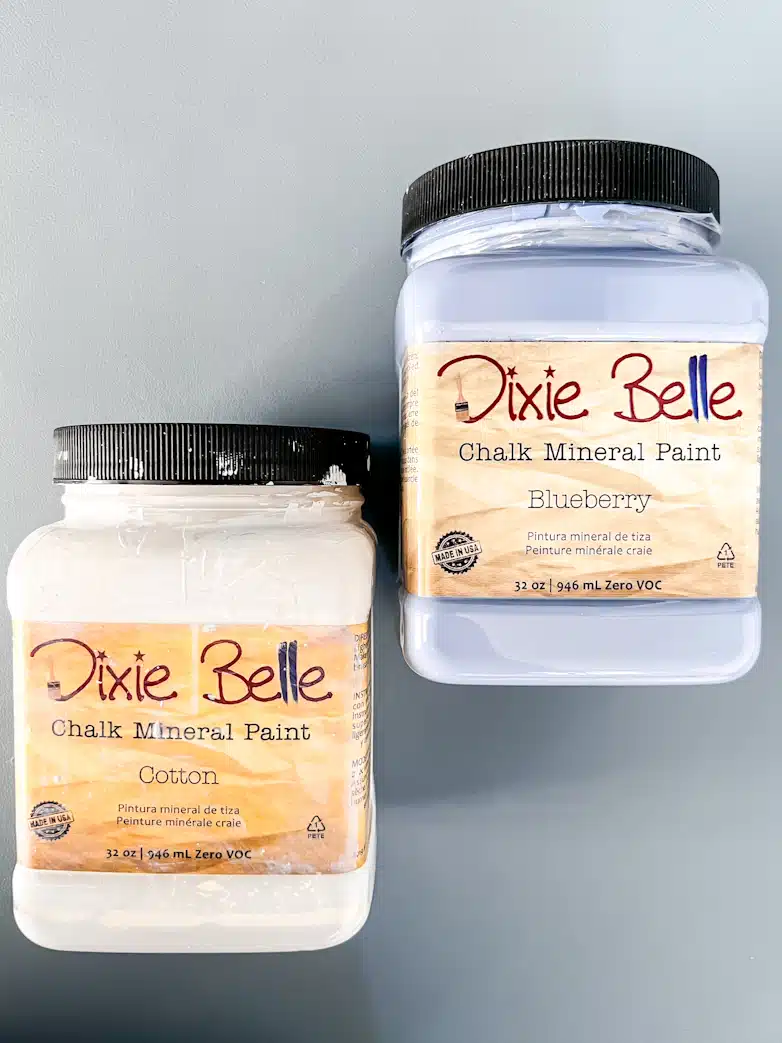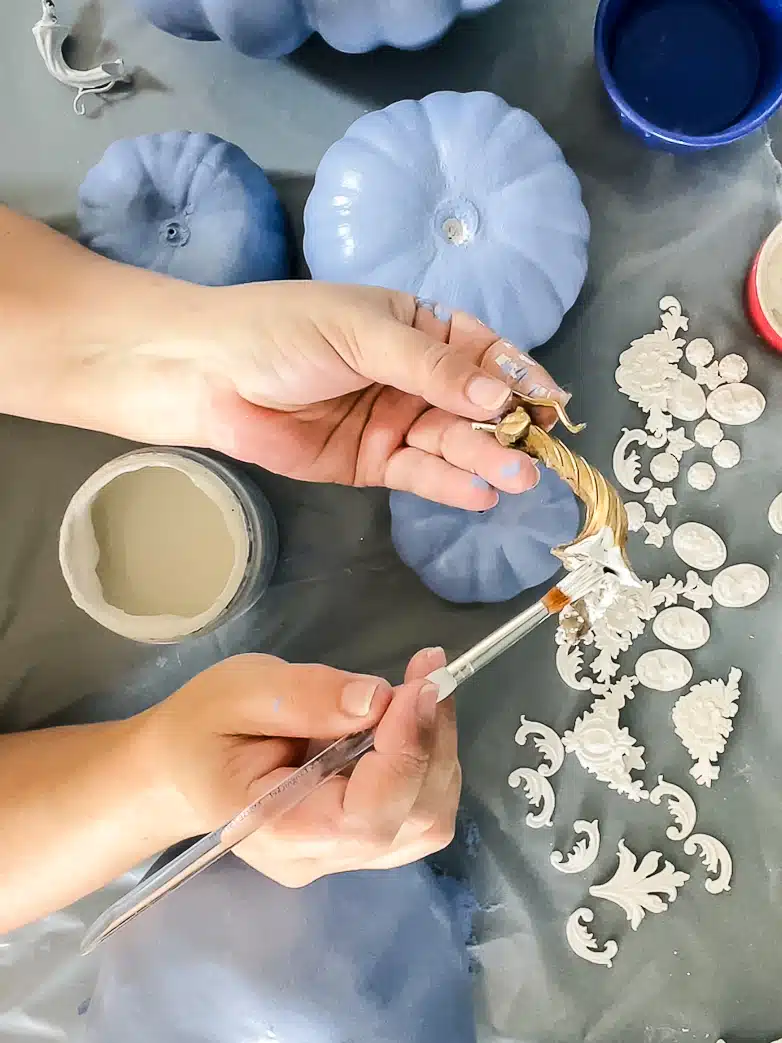Blue and White Pumpkins Inspired by Wedgwood Jasperware
Fall is almost here! Every year, I like to find a new way to decorate a few pumpkins in a style I admire or decorate with. My first try was decoupaged chinoiserie pumpkins, which I absolutely loved. Last year, I decorated a metal pumpkin with transfer images. This year, I wanted to decorate blue and white pumpkins to look like Wedgwood Jasperware!
I have never seen anything like it, but in my mind, it was a great idea, so I gave it a go!
Jasperware, or jasper ware, is a type of pottery first developed by Josiah Wedgwood in the 1770s. Usually described as stoneware, it has an unglazed matte “biscuit” finish and is produced in a number of different colours, of which the most common and best known is a pale blue that has become known as Wedgwood Blue.
(Wikipedia)
Products I Used to Make the Blue and White Pumpkins

Digging through my storage containers full of pumpkins, I found a few random ones that have seen better days and were really ugly.

To achieve the perfect blue and white identical to Wedgwood Jasperware, I used Dixie Belle Chalk Mineral Paint in Cotton and Blueberry.

Air-dry clay is one of the few media I have never used before! I have always been curious, and this was the perfect excuse to try it out. I bought white and didn’t even have to paint the dried pieces.

When I saw these small silicone molds, I knew they would be perfect for my Jasperware imitation pumpkins. In fact, they inspired this whole project!
How to Make the White Air-dry Clay Moldings

To prevent the clay from sticking to the silicone, I painted the molds on the inside with a little cornstarch. I was skeptical but hopeful to see if the clay pieces would come out in one piece with all the tiny details intact.

After some trial and error, I learned that it’s best to remove ALL the excess clay after filling the mold cavity. Cutting away extra bits afterward is possible, but it is a tedious task.

I was surprised that the molded pieces could be removed from the mold before the clay was dry. That was great news since I had to make several tiny pieces to decorate the pumpkins.
The clay moldings fell out with all the beautiful details imprinted by carefully twisting and turning the molds. I was pleasantly surprised!
Painting the Pumpkins to Look Like Wedgwood Jasperware

Removing the stems from the pumpkins made it a lot easier to paint.

The Dixie Belle Chalk Paint color, named Blueberry, was ALMOST perfect to imitate Wedgwood blue. I added a few drops of white to lighten it ever so slightly.
The texture of dried chalk paint is very similar to the texture of Jasperware. For that reason, I decided not to add a coat of sealer over the chalk paint.

I painted all the stems white, and the color Oyster matched the color of the raw clay perfectly.

With most of my craft supplies still waiting to be unpacked in the new home office, I could not find my glue gun. However, I found this tiny bottle of thick glue without a label, and it worked like a charm! I suspect it might be or be similar to Titebond Quick & Thick. It had no smell and seemed to be water-soluble. The best glue I’ve ever used!
The Cutest Blue and White Pumpkins Ever!

These blue pumpkins, with intricate white detail, are so similar to Wedgwood Jasperware that it is almost unreal!
Even though I don’t own any Jasperware (yet), I am constantly browsing Marketplace for new listings. It’s a new and growing interest that fascinates me.
I can’t stop staring at these stinking cute pumpkins!

I think they fit right in with the blues in my new office! It’s not the same blue, but it works. The office is ready for autumn – no orange required!

What do you think? Are they a good imitation? Are you a Wedgwood fan? I would love to hear from you!
Until next time, happy crafting!
